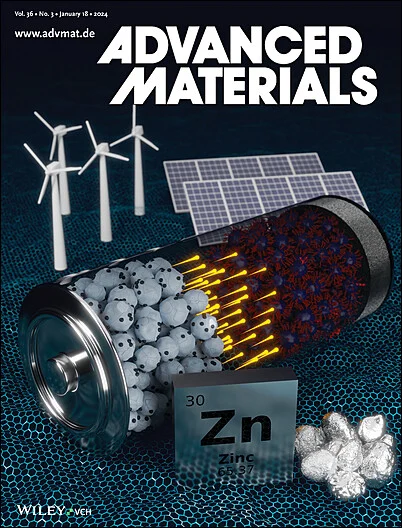All-3D-Printed Multi-Environment Modular Microrobots Powered by Large-Displacement Dielectric Elastomer Microactuators.
IF 26.8
1区 材料科学
Q1 CHEMISTRY, MULTIDISCIPLINARY
引用次数: 0
Abstract
Microrobots are expected to push the boundaries of robotics by enabling navigation in confined and cluttered environments due to their sub-centimeter scale. However, most microrobots perform best only in the specific conditions for which they are designed and require complete redesign and fabrication to adapt to new tasks and environments. Here, fully 3D-printed modular microrobots capable of performing a broad range of tasks across diverse environments are introduced. For multi-environment navigation, large-displacement dielectric elastomer microactuators with a soft-stiff hybrid structure are developed, capable of powering microrobots to stride over obstacles on various terrestrial terrain and rapidly propel themselves across aquatic terrain. To further expand their capabilities beyond mere navigation, ten task-specific modules for the microrobots are developed. All modules are fabricated using a digital light processing multimaterial 3D printer capable of simultaneously printing multiple photocurable resins, providing a broadly applicable platform for fabricating mesoscale robotic components. The microrobots navigate across smooth, rough, granular, and aquatic environments, demonstrating tasks such as controlling the movements of nearby robots, interacting with humans to avoid collisions, and collaboratively dragging heavy objects through multi-unit operation. The study addresses key limitations hindering the integration of modular design into microrobots, enabling adaptation to new environments and tasks.由大位移介电弹性体微致动器驱动的全3d打印多环境模块化微型机器人。
微型机器人具有亚厘米级的尺寸,可以在狭窄和混乱的环境中进行导航,有望突破机器人技术的界限。然而,大多数微型机器人只有在它们设计的特定条件下才能表现最佳,并且需要完全重新设计和制造以适应新的任务和环境。在这里,介绍了能够在不同环境中执行广泛任务的全3d打印模块化微型机器人。针对多环境导航,研制了一种软-硬混合结构的大位移介质弹性体微致动器,使微机器人能够跨越各种陆地地形上的障碍物,并快速推进自身穿越水生地形。为了进一步扩展它们的功能,除了导航之外,还为微型机器人开发了10个特定任务的模块。所有模块都使用数字光处理多材料3D打印机制造,能够同时打印多种光固化树脂,为制造中尺度机器人组件提供了广泛适用的平台。微型机器人在光滑、粗糙、颗粒和水生环境中导航,演示诸如控制附近机器人的运动、与人类互动以避免碰撞、以及通过多单元操作协同拖动重物等任务。该研究解决了阻碍模块化设计集成到微型机器人中的关键限制,使其能够适应新的环境和任务。
本文章由计算机程序翻译,如有差异,请以英文原文为准。
求助全文
约1分钟内获得全文
求助全文
来源期刊

Advanced Materials
工程技术-材料科学:综合
CiteScore
43.00
自引率
4.10%
发文量
2182
审稿时长
2 months
期刊介绍:
Advanced Materials, one of the world's most prestigious journals and the foundation of the Advanced portfolio, is the home of choice for best-in-class materials science for more than 30 years. Following this fast-growing and interdisciplinary field, we are considering and publishing the most important discoveries on any and all materials from materials scientists, chemists, physicists, engineers as well as health and life scientists and bringing you the latest results and trends in modern materials-related research every week.
 求助内容:
求助内容: 应助结果提醒方式:
应助结果提醒方式:


